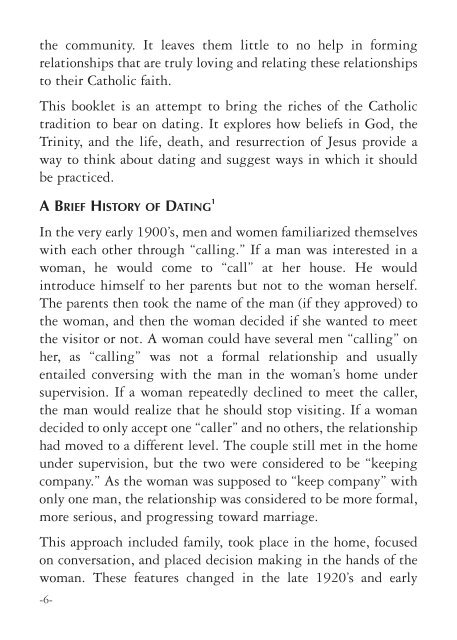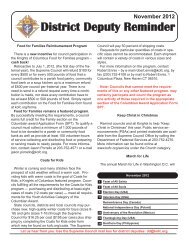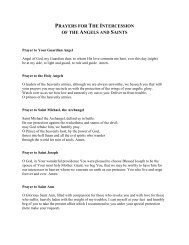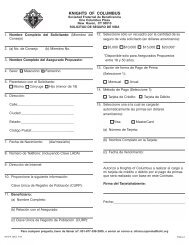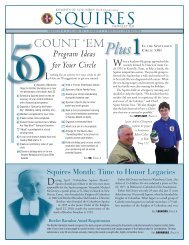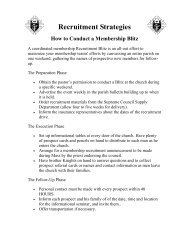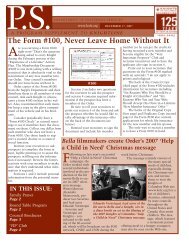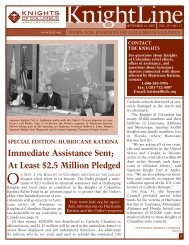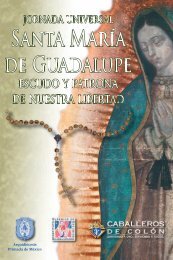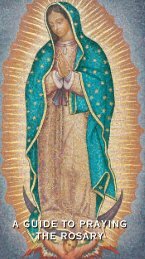Dating - Knights of Columbus, Supreme Council
Dating - Knights of Columbus, Supreme Council
Dating - Knights of Columbus, Supreme Council
You also want an ePaper? Increase the reach of your titles
YUMPU automatically turns print PDFs into web optimized ePapers that Google loves.
the community. It leaves them little to no help in forming<br />
relationships that are truly loving and relating these relationships<br />
to their Catholic faith.<br />
This booklet is an attempt to bring the riches <strong>of</strong> the Catholic<br />
tradition to bear on dating. It explores how beliefs in God, the<br />
Trinity, and the life, death, and resurrection <strong>of</strong> Jesus provide a<br />
way to think about dating and suggest ways in which it should<br />
be practiced.<br />
A BrIef HIstory <strong>of</strong> dAtIng 1<br />
In the very early 1900’s, men and women familiarized themselves<br />
with each other through “calling.” If a man was interested in a<br />
woman, he would come to “call” at her house. He would<br />
introduce himself to her parents but not to the woman herself.<br />
The parents then took the name <strong>of</strong> the man (if they approved) to<br />
the woman, and then the woman decided if she wanted to meet<br />
the visitor or not. A woman could have several men “calling” on<br />
her, as “calling” was not a formal relationship and usually<br />
entailed conversing with the man in the woman’s home under<br />
supervision. If a woman repeatedly declined to meet the caller,<br />
the man would realize that he should stop visiting. If a woman<br />
decided to only accept one “caller” and no others, the relationship<br />
had moved to a different level. The couple still met in the home<br />
under supervision, but the two were considered to be “keeping<br />
company.” As the woman was supposed to “keep company” with<br />
only one man, the relationship was considered to be more formal,<br />
more serious, and progressing toward marriage.<br />
This approach included family, took place in the home, focused<br />
on conversation, and placed decision making in the hands <strong>of</strong> the<br />
woman. These features changed in the late 1920’s and early<br />
-6-


